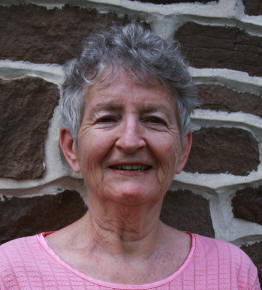 (4/21) A few weeks ago, some Penn State Master Gardeners from Adams County attended a presentation by Dr. Doug Tallamy, Professor of Entomology at the University of Delaware. Dr. Tallamy writes and gives talks on maintaining and establishing native plants in home environments.
(4/21) A few weeks ago, some Penn State Master Gardeners from Adams County attended a presentation by Dr. Doug Tallamy, Professor of Entomology at the University of Delaware. Dr. Tallamy writes and gives talks on maintaining and establishing native plants in home environments.
Dr. Tallamy certainly presented a startling account of the present state of our natural environment. According to him, 432 species of North American birds are threatened with extinction; today there are 1.5 billion fewer breeding birds than there were 40 years ago; there are 64,000 species of native insects in the U.S; 57 bee species in New England
depend on two plant species for food; there has been a 96.4% decline in Monarch butterflies since 1976; and we have 14,000 species of moths and butterflies in the U.S.
Everyone knows we depend on insect pollination for much of our food and our livestock’s food. Without insects and other pollinators humans could not live on earth. Now that I have your attention, here’s what you can do. Make a commitment to plant some native plants, either trees, flowering plants, or shrubs on your property. Dr. Tallamy said that
85.6% of the land east of the Mississippi River is privately owned. We must accept our responsibility and address the problem of habitat loss in our own backyards, woodlands and meadows. We need to stop indiscriminately killing insects.
Insects help to maintain plant diversity, which is critically important. Insect families contribute the most energy to food systems, as both pollinators and as caterpillars. A University of Delaware research project determined that a pair of chickadees needs 5000 to 9000 insects to raise one brood of babies. Many of those insects are tasty, soft,
protein-rich caterpillars.
Dr. Tallamy points out some other disturbing facts in his book Bringing Nature Home. "Not all native plant species are equal in their ability to support large numbers of insect herbivores"; and "Oak trees support 534 species of Lepidoptera". Lepidoptera is the family of butterflies and moths, which start their life cycle as caterpillars.
Stem nesting insects (many native bees) require pithy stems of daylily, elderberry, and others to lay their eggs in summer and fall. Don’t clean off your gardens in the fall; leave the dead stems for nesting sites, egg laying sites, and seed heads for bird food during the winter.
Our many native bee species here in Zone 6 require flowering plants to be available from March through November for food and nesting sites. You can search the web for native plants that flower in specific seasons. In early to mid-spring Solomon seal (Polygonatum commutatum), spring beauty (Claytonia virginica), Jack-in-the-pulpit (Arisaema
triphyllum), may apple (Podophyllum peltatum), the shrub or small tree service berry (Amelanchier), and willow (Salix) are great choices.
For mid to late spring false indigo (Baptisia australis), Dutchman’s breeches (Dicentra cucullaria), lupine (Lupinus perennis), columbine (Aquilegia vulgaris), redbud tree (Cercis canadensis), tulip tree (Liriodendron tulipifera), and the vine Virginia Creeper (Parthenocissus quinquefolia) will provide good food sources for native species.
Good summer species are butterfly weed (Asclepias tuberosa), swamp milkweed (Asclepias incarnata), Poppy (Papaveraceae) and bee balm (Monarda didyma). Mid to late summer species include common milkweed (Asclepias syriaca), trumpet vine (Campsis radicans), black eyed Susan (Rudbeckia hirta), Lobelia (Lobelia cardinalis) and native honeysuckle (Lonicera
sempervirens). Note that the white flowered honeysuckle growing all over the place is a non-native invasive and should be removed.
Late summer to fall species are New Jersey tea (Ceanothus americanus), Woodbine (Clematis virginiana), common milkweed (Asclepias syriaca), Joe-Pye Weed (Euporatorium), sunflower (Helianthus), and witch hazel (Hamamelis virginiana). I have three native witch hazel trees that bloom in November. Their seed pods, each with four seeds, take two years
to mature before the seeds are shot out of the seed pods.
Knowing the flowering cycle of plants enables us to achieve the goal of having blooming native flowers from March through November. An excellent source for help finding native plants specific to any U. S. zone is the Native Plant Finder on the National Wildlife Federation website. This Plant Finder resulted from collaboration between the Federation
and Dr. Doug Tallamy.
Three books I would recommend include Tallamy’s listed above, Nature Friendly Garden by Marlene A. Condon, Stackpole Books; and Bird-by-Bird Gardening by Sally Roth, Rodale Books. I
Read other articles on birds, wildlife & beneficial insects
Read other articles on garden and landscape design
Read other articles on ecological gardening & native plants